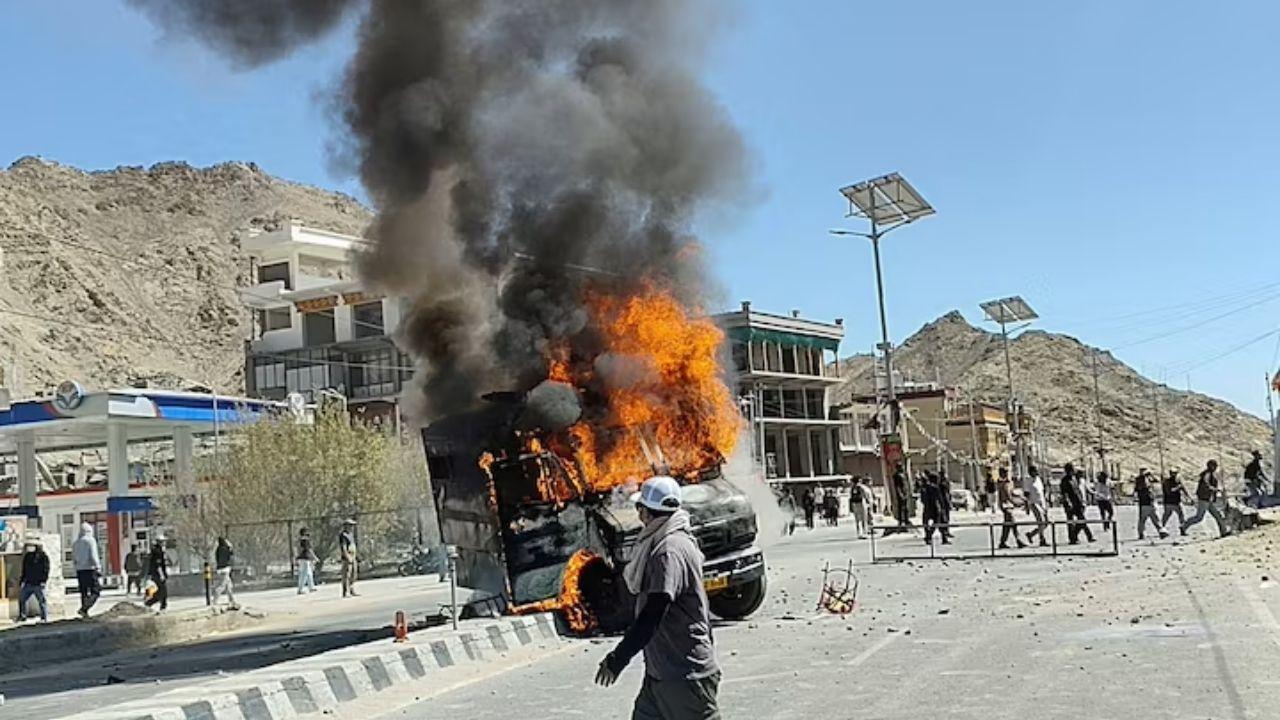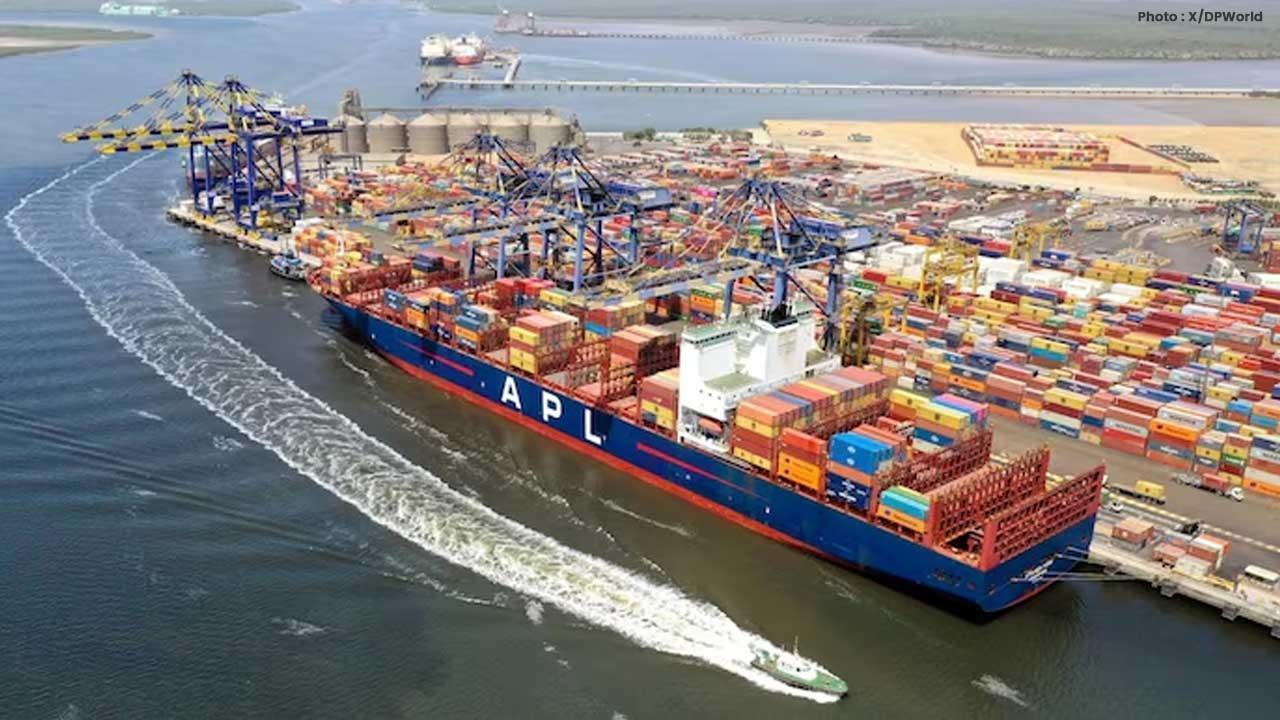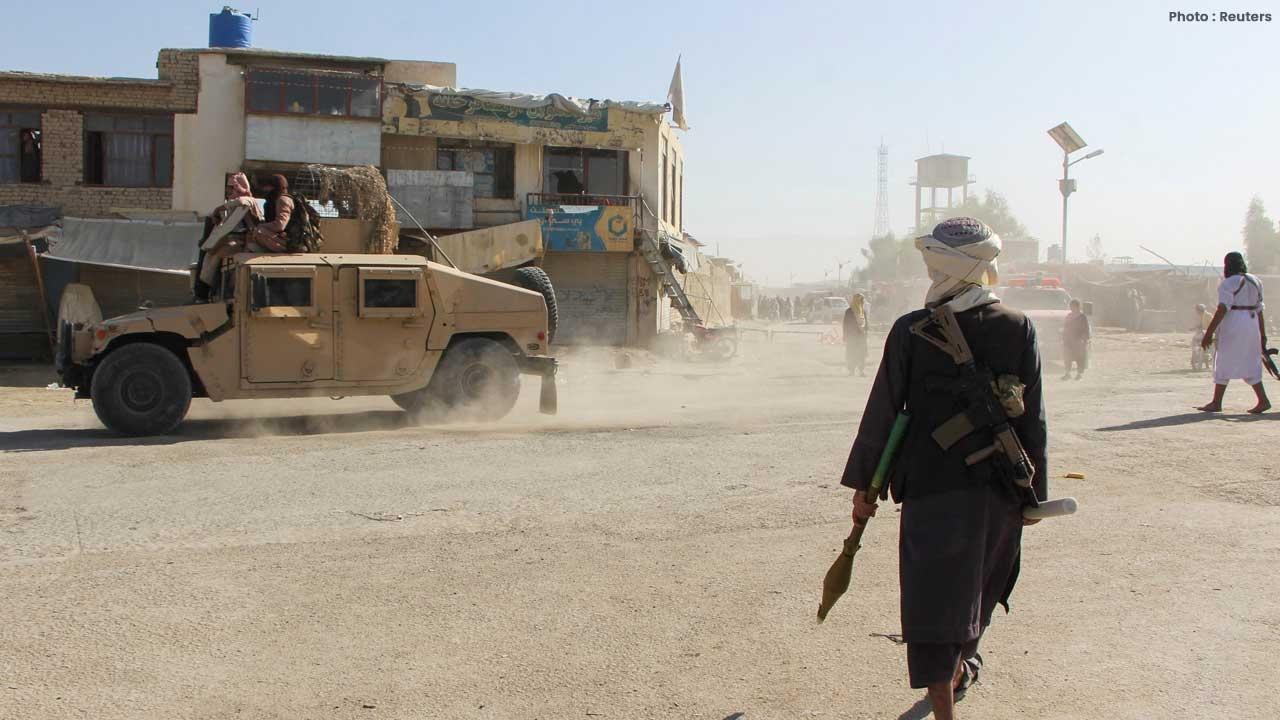
Join 10k+ people to get notified about new posts, news and tips.
Do not worry we don't spam!

Post by : Anis Farhan
Photo: Reuters
Ladakh, India's northernmost region, has always been a land of contrasts—majestic mountains, serene monasteries, and a rich cultural tapestry. However, in 2025, the region finds itself at a pivotal juncture, grappling with socio-political unrest, rapid infrastructural development, and pressing environmental challenges. This article delves into the events shaping Ladakh's present and future.
The demand for statehood in Ladakh isn't new. Since the revocation of Article 370 in 2019, which led to the bifurcation of Jammu and Kashmir into two Union Territories—Jammu & Kashmir and Ladakh—there has been a growing sentiment among Ladakhi residents for greater autonomy. The absence of a legislative assembly and the region's exclusion from the Sixth Schedule of the Indian Constitution, which provides special protections to tribal areas, have fueled these demands.
In September 2025, renowned activist and engineer Sonam Wangchuk initiated a hunger strike to draw attention to the region's demands for statehood and inclusion under the Sixth Schedule. His protest garnered significant attention both nationally and internationally, highlighting the grievances of the Ladakhi people.
What began as a peaceful demonstration soon escalated into violence. On September 24, 2025, clashes between protesters and security forces in Leh resulted in the deaths of four individuals and injuries to over 70, including police personnel. The unrest saw the ransacking of a BJP office and damage to multiple police vehicles. In response, authorities imposed a curfew in parts of Leh, with security forces patrolling the streets to maintain order.
The Indian government has expressed its commitment to engaging with local leaders to address the concerns of Ladakh's residents. Discussions with the Apex Body Leh and the Kargil Democratic Alliance are ongoing, with a new round of talks scheduled for October 6, 2025. However, the recent violence has strained relations and underscored the urgency of finding a resolution.
The Border Roads Organisation's (BRO) Project Vijayak has been instrumental in improving infrastructure in Ladakh. Celebrating its 15th Raising Day in September 2025, the project has constructed and maintained over 1,400 km of roads and 80 major bridges across the region. Notably, the strategic Zojila Pass was reopened within just 31 days of its winter closure in April 2025, marking an unprecedented achievement in high-altitude connectivity.
In a significant move, the Government of India approved a revised cost of ₹1,925.28 crores under the Prime Minister's Development Package (PMDP) for the construction of transmission lines and grid stations in Nubra and Zanskar. This initiative aims to enhance the power infrastructure in these remote areas, ensuring a more reliable and sustainable energy supply.
The Indian Army has also contributed to enhancing connectivity in Ladakh by inaugurating two new bailey bridges over the Shyok River near Shatse Taknak in Leh. These modular bridges aim to improve year-round transportation between the Shyok and Nubra valleys, especially during the harsh winter season.
Ladakh's unique ecosystem is under threat due to climate change. Rising temperatures have led to the accelerated melting of glaciers, which are a crucial water source for the region. This glacial retreat poses a significant risk to the local agriculture and water supply, affecting the livelihoods of the Ladakhi people.
In August 2025, Ladakh experienced an extraordinary rainfall event, recording a surge of nearly 930% above normal. This unprecedented rainfall led to flash floods, landslides, and extensive damage to infrastructure. The increased frequency of such extreme weather events underscores the urgent need for climate adaptation strategies in the region.
The strategic importance of Ladakh has led to increased militarization, which has further strained the region's environment. The construction of roads, helipads, and ammunition depots in eco-sensitive zones has raised concerns among environmentalists about the long-term ecological impact.
Despite the challenges, Ladakh's rich cultural heritage continues to thrive. The Ladakh Festival 2025, held from September 21 to 24, showcased the region's vibrant traditions. The festival featured cultural processions, traditional music and dance performances, and exhibitions of local crafts. The event not only celebrated Ladakh's heritage but also promoted tourism and community engagement.
Monasteries in Ladakh play a pivotal role in preserving the region's cultural and spiritual traditions. These institutions serve as centers of learning, meditation, and community gatherings. Spiritual leaders continue to influence social and political discourse, advocating for peace, environmental conservation, and cultural preservation.
The ongoing statehood movement highlights the need for inclusive governance in Ladakh. Ensuring the region's representation in legislative processes and providing constitutional safeguards for its indigenous communities are crucial steps toward addressing the aspirations of the Ladakhi people.
Balancing development with environmental conservation is paramount. While infrastructure projects are essential for economic growth, they must be implemented with due consideration for the region's fragile ecosystem. Sustainable practices, such as eco-friendly construction and renewable energy initiatives, should be prioritized.
Developing climate-resilient infrastructure and promoting sustainable agricultural practices can help mitigate the impacts of climate change. Investment in research and technology to monitor environmental changes and implement adaptive strategies is essential for the region's long-term sustainability.
Ladakh in 2025 stands at a crossroads, facing a complex interplay of socio-political unrest, rapid infrastructural development, and environmental challenges. The region's future hinges on finding a delicate balance between modernization and preservation, autonomy and integration, development and conservation. As Ladakh navigates these turbulent times, the resilience and determination of its people will undoubtedly shape its path forward.
This article is based on information available as of September 2025. The situation in Ladakh is dynamic, and developments may have occurred since the publication of this article. Readers are advised to consult official sources for the most current information.










Mitchell Marsh Backs Aggressive Plan Ahead of India T20 Series
Australia captain Mitchell Marsh says his team will continue playing fearless cricket as they prepar

Smriti Mandhana Becomes World’s No.1 ODI Batter
India’s Smriti Mandhana rises to No.1 in ICC Women’s ODI rankings with a career-best rating of 828 a

Suryakumar Yadav Focuses on Team Spirit and Fielding Goals
India captain Suryakumar Yadav stresses teamwork, energy, and stronger fielding efforts ahead of the

Sherwood Leads Canucks to Overtime Win Against Oilers
Kiefer Sherwood scored twice, including an overtime winner, as Vancouver Canucks defeated Edmonton O

Freeman Leads Dodgers to 6-5 Thriller Over Blue Jays
Freddie Freeman’s 18th-inning walk-off homer gives the Dodgers a thrilling 6-5 win over the Blue Jay

Bayern Target Another Victory in German Cup Match
Bayern Munich look to continue their perfect start to the season with a German Cup clash against Col